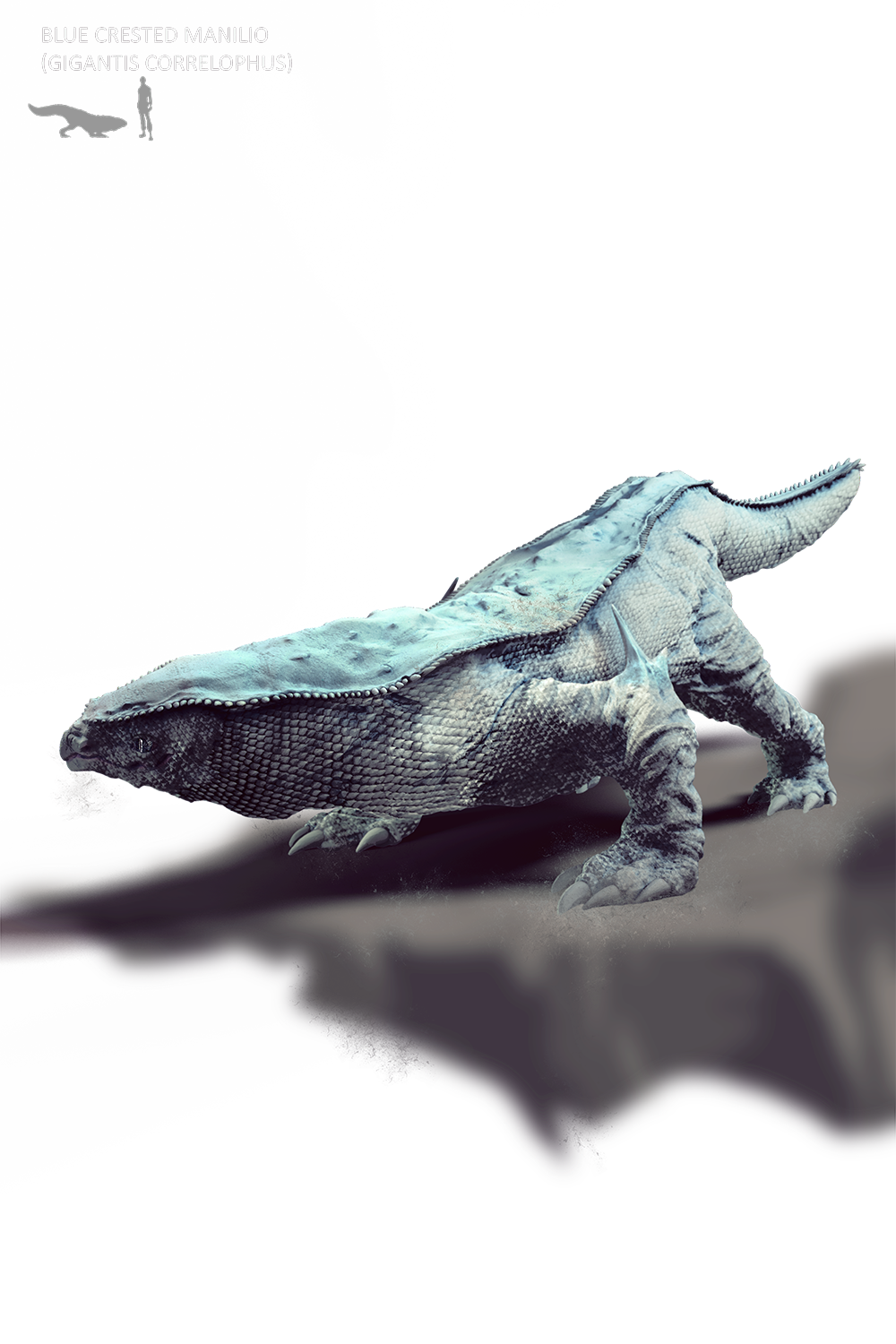Croaking Morogodo(Anurodion Artiodata)
Having some resemblances with the Antilope, the Morogodo also belongs to the herbivore family.
It's an animal that roams alone through the forests in Pantagonia. Living in such an environment alone, the Morogodo almost lost all their hearing, but in counterpart they developed some habilities as their ancestor ,the chameleon, having eyes that can survey the area while feeding, aswell as the extensive tongue, that enables them to eat the highest juicy leaf's.
Having the lack of numbers to resist predators attemps, Morogodo is equiped with strong forepaws with big claws.
This particular species during the mating season, echoes their calls through the forest in order to captivate the female, filling up the pouch with air and showing off it's vivid colors.
It's an animal that roams alone through the forests in Pantagonia. Living in such an environment alone, the Morogodo almost lost all their hearing, but in counterpart they developed some habilities as their ancestor ,the chameleon, having eyes that can survey the area while feeding, aswell as the extensive tongue, that enables them to eat the highest juicy leaf's.
Having the lack of numbers to resist predators attemps, Morogodo is equiped with strong forepaws with big claws.
This particular species during the mating season, echoes their calls through the forest in order to captivate the female, filling up the pouch with air and showing off it's vivid colors.


Timelapse of the Croaking Morogodo
___________________________________________________________________________________
Blue Crested Manilio (Gigantis Correlophus)
The slow and armored Blue Crested Manilio is usually seen in the more humid areas of the Moçâmedes Desert.
They are nocturnal and despite its size, hard to find.
Feeds of small mammals/reptiles.
Feeds of small mammals/reptiles.
Protected with a tough carcass sorrounded by spikes he is also known by the natives as the Rei Azul(Blue King).


___________________________________________________________________________________
Plated Lumis (Cerulio Max Lumina)
Found in Waitomo Glowworms Cave (New Zeland), the Plated Lumis are rare and mischevious predators that resemble stalactites when on camouflage. Living up to 500years old, the Plated Lumis throws their eggs in the floor of the cave, near the water. The percentage of living offspring per season that manage to climb to the ceiling of the cave are about 8%. After fixing themselves on the ceiling using
silk webs, they will grow and eat whatever that comes in their range, until the silk can't hold their weight and they fall to their deaths.
silk webs, they will grow and eat whatever that comes in their range, until the silk can't hold their weight and they fall to their deaths.


___________________________________________________________________________________
Pale Kitar (Malacostraca Bipedacea)
With the retreat of the sea's, marine species had the need to evolve and come to land. The Pale Kitar lives near the Argo recif, feeding on algaes and small fish's.
Despites it's armored look, the Kitar is a very agile speciemen, but while they can filter the oxigen in the water which enables them to breath underwater they lost all their swimming habilities.
The groups often round the 12 to 20 individuals.
Despites it's armored look, the Kitar is a very agile speciemen, but while they can filter the oxigen in the water which enables them to breath underwater they lost all their swimming habilities.
The groups often round the 12 to 20 individuals.


___________________________________________________________________________________
Cliffhanger Hornbill (Anthraceros Falandis)
The Cliffhanger Hornbill species is found mostly at the base of the Fish River Canyon, Namibia. The closest relative to this species is the Ostrich, and like the Ostrich, the Cliffhanger Hornbill can't use their wings to fly. To survive in the Canyon this species learned how to climb the canyon walls by making use of their strong legs and opposable thumbs. They also climb in nesting season due to the fact that their nest's are made between the major cracks on the canyon wall's, to protect the babies from predators.
Very territorial, the males usually end up in battles of strength, banging the knife shaped horns against each other, to see who is the strongest.
Very territorial, the males usually end up in battles of strength, banging the knife shaped horns against each other, to see who is the strongest.


___________________________________________________________________________________



